Whether you're in the early stages of ideation or managing ongoing development, ThinkHub helps product development teams collaborate more efficiently. Here are some key ways a product development team can leverage ThinkHub:
1. Collaborative Ideation and Brainstorming
Product development starts with ideas, and ThinkHub's collaborative environment makes it easy to gather input from the entire team, regardless of who is in the room and who is remote:
- Brainstorming Workshops: Host brainstorming sessions where team members can share product ideas in real time. Use Notes and Whiteboards to capture and organize thoughts visually on the ThinkHub Canvas. Remote participants can connect via the T1V app to share ideas directly on the Canvas, ensuring full participation from all team members.
- Concept Sketching: Use ThinkHub’s annotation tools to sketch rough ideas, product features, or workflows on the Canvas. Visualizing concepts during discussions helps the team clarify their vision and iterate quickly.
- Voting on Ideas: Use digital sticky notes to collect feature suggestions, then have the team vote on them by organizing the notes into priority categories. This method keeps everyone aligned on the most important product features and goals.
Pro Tip: Save your brainstorming Canvases to revisit and build upon in future meetings.
2. Visual Roadmapping and Project Planning
ThinkHub's large Canvas and multi-touch functionality enable teams to create, display, and adjust product roadmaps during meetings.
- Product Roadmaps: Build and display product roadmaps that map out key milestones and deliverables. As the team progresses, update the roadmap in real time to reflect changes and keep everyone on the same page.
- Sprint Planning: Plan and organize sprint tasks visually on the Canvas. Use Notes and the annotation tools to break down tasks, assign responsibilities, and track progress across sprints.
- Live Dashboards for Project Management: Display live dashboards from project management tools (JIRA, Basecamp, etc) side by side on the Canvas. This helps teams monitor sprint tasks, timelines, and overall project health without switching between different applications.
Pro Tip: Use ThinkHub to track your product development lifecycle in real time, so everyone stays informed on deadlines and key milestones.
3. Cross-Functional Collaboration
Product development often requires input from multiple departments (design, engineering, marketing, etc.). ThinkHub allows teams to collaborate effectively across functions.
- Interactive Design Reviews: Share CAD files, product specs, or mockups directly on the ThinkHub Canvas. Use annotation tools to mark up designs in real time, and allow team members from different departments to give feedback.
- Prototyping Feedback Sessions: Conduct feedback sessions with engineering, design, and product teams using ThinkHub to review prototype iterations. Teams can annotate designs and documents, suggest changes, and test assumptions visually on the Canvas.
- Marketing and Launch Planning: As your product approaches launch, use ThinkHub to coordinate efforts with marketing. Share marketing materials, timelines, and content on the Canvas to ensure a cohesive strategy.
Pro Tip: Use ThinkHub's ability to display multiple content types to bring design, engineering, and marketing teams together for seamless product development.
4. Remote Collaboration for Distributed Teams
With product development teams often spread across locations, ThinkHub enables seamless remote collaboration.
- Remote Participation: Remote team members can join meetings using the T1V app, contributing ideas and interacting with the same Canvas as in-room participants. They can use the digital pointer, share content, and make annotations, ensuring full involvement.
- Remote Prototyping: Share design files and product mockups with remote team members in real time. They can review, annotate, and suggest modifications directly on the Canvas, eliminating the need for constant back-and-forth emails.
Pro Tip: For remote teams, consider using ThinkHub Cloud so you can access your Canvas any time from your laptop.
5. Tracking Progress and Product Iterations
Tracking development iterations is critical in product development. ThinkHub makes it easy to keep track of every stage of the process.
- Version Tracking: Use the Canvas to document each version of the product as it evolves. Save each Canvas, allowing the team to revisit earlier designs or decisions if needed.
- Task Management: As the team moves through different stages of development, use ThinkHub’s annotation tools to assign tasks, track completion, and adjust responsibilities.
- Daily Stand-Ups: Hold daily stand-ups on ThinkHub to ensure all team members are aligned. Share task lists and progress reports, and use the Canvas to note roadblocks or upcoming priorities.
Pro Tip: ThinkHub’s ability to save and recall previous sessions allows teams to track each stage of development, ensuring no details are missed.
6. User Testing and Feedback
User feedback is critical in product development, and ThinkHub helps streamline the process.
- Usability Testing Feedback: Conduct user testing sessions and gather feedback from participants on the Canvas. Use notes and annotation tools to capture insights and organize them visually so the team can iterate quickly on feedback.
- Test Result Analysis: Display test results, user surveys, or analytics reports directly on the Canvas. Use annotations to highlight important findings, and engage in group discussions to develop next steps.
Pro Tip: Use ThinkHub to categorize user feedback, prioritize changes, and track how the product evolves based on input.
7. Create Actionable Next Steps
The success of product development depends on turning collaboration into action. Here’s how to ensure your meetings lead to clear follow-ups:
- Assign Tasks in Real Time: As decisions are made during meetings, use the Canvas to assign tasks directly. Annotations and notes can be saved, ensuring everyone knows their responsibilities moving forward.
- Track Progress Across Iterations: Review the Canvas during each meeting to track progress on tasks and iterations. Visual tracking helps the team see which tasks have been completed and what’s next in the development pipeline.
Pro Tip: Use the Canvas to keep an ongoing task list that evolves with each meeting, keeping everyone aligned on what needs to be done.
Bonus Tip
For new users, start by using ThinkHub for brainstorming sessions and concept reviews. Once your team becomes comfortable, gradually integrate it into other phases like sprint planning, cross-functional collaboration, and progress tracking.
